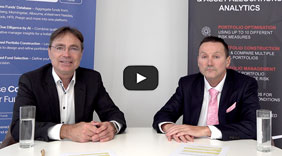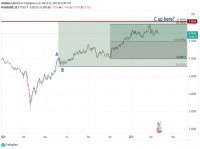|

The Year Ahead
We asked Jon Sundt, founder of Altegris Investments Inc., to review the prospects for managed futures, macro and quant strategies in 2010. Altegris oversees more than $2 billion in assets and does business with about 90 commodity trading advisors. See the Top Ten in this issue for the best performers in the Altegris 40 index.
The July 14, 2009, issue of Opalesque Futures Intelligence contains Mr. Sundt’s perspective on investing with CTAs.
“Investors are coming back to alternatives, but now they’re more focused on liquidity and are more discerning.”
Opalesque Futures Intelligence: What are your key pointers for investing in 2010?
Jon Sundt: There are real challenges as to where you can get returns. US stocks are at historically high price/earnings ratios. It is hard to believe that American consumers will push P/E ratios to new highs. Bonds have a potential bubble, with rates practically at zero. Long-only bond investing is very dangerous, but relative value may be attractive. You don’t want to be long anything that people are printing and putting into the market in massive amounts, like Treasuries. I don’t think we’re out of the woods economically. A massive de-leveraging process is continuing and has a way to go—warning signals include the slump in commercial real estate and debt crises in Greece and Dubai. For conventional asset allocation, you have to avoid too much exposure to fixed income and selectively look overseas. Alternatives, in particular strategies that go long and short, are attractive.
OFI: If there is more economic trouble, aren’t hedge funds vulnerable, as they were in 2008?
JS: In 2008 hedge funds lost 19% or 20%, depending on which index you consult. That’s only half as bad as other investments. And of course managed futures had double digit-gains. Publicity around blowups and fraud scandals obscure the fact that the hedge fund industry did well in the past two years when you look at it as a whole.
OFI: Which hedge fund strategies are likely to do well now?
JS: Certain strategies performed spectacularly in the 2009 credit recovery, but that was a temporary situation. The time frame for credit opportunities was short. Credit spreads were very wide in February and March, then narrowed in the Spring and Summer. By contrast, global macro, managed futures and long/short equity are bedrock styles for a well-diversified alternatives portfolio.
OFI: Weren’t managed futures disappointing in 2009?
JS: It looks like CTAs will end 2009 with a small loss. November was the best month of the year for the strategy. Many managers benefitted from the short dollar/long commodities trade and trend followers made money going long interest rates, on US bonds in particular. It was a tough year for long-term trend followers but short-term traders did better. A portfolio that combines long-term trend followers with short-term traders held up pretty well. If there is a double dip, these strategies have a better chance.
OFI: Won’t the 2009 returns scare investors away from trend-followers?
JS: It is important for investors to think in terms of meaningful time windows, not necessarily calendar years. We evaluate manager performance in 24-month and 36-month windows. The Altegris 40 managed futures programs returned close to 20% in a 24-month rolling window. If you consider what happened since the credit crisis started in 2008, managed futures has done well. But picking the right managers is essential. Some fund of funds don’t invest in trend followers, possibly because they themselves made poor investment choices in the past or saw other people make poor choices.
OFI: What’s going on with global macro?
JS: Global macro is increasingly attractive. Because global macro traders have discretion, they can capitalize on unprecedented developments like the growing fear that Dubai and Greece may default on their debt. In an environment where historical patterns no longer hold, it is an advantage to have discretion to adjust to market events. In 2009, many global macro traders profited from relative value trades between sovereign bonds while some did well with currencies or capitalized on Brazil and other emerging markets.
OFI: Do you invest in emerging markets?
JS: There is a compelling case for emerging markets, which global macro managers can take advantage of, whether through currencies, debt or equity. We’re looking right now for high-quality EM managers who can get hedged exposure in India, Brazil and China. “Hedged” is the key word.
OFI: Does it look like there will be good trades for macro this year?
JS: For talented global macro traders, there is a lot of opportunity. Many bank prop trading desks are closed now, so there are fewer macro traders, which means the ones still in the business have a stronger hand. Interest rates are volatile and there is much dislocation the G20 sovereign debt market and in currency markets.
OFI: How do quantitative strategies look, going across managed futures, macro and long/short equity?
JS: I like quantitative strategies and don’t see any problems with the managers we follow, but it depends on a manager’s understanding of the market and his leverage. You have to pay attention to quant traders’ gross exposure. Net exposure can be misleading. You can have two traders, both with zero net exposure but very different leverage. One borrows one dollar, goes short one dollar, long one dollar; gross exposure is two. The other borrows $7, goes long $4, short $4; gross exposure is eight. Both say they’re market neutral! You have to look through that. Typically we stay away from those with gross exposure 4X or higher.
OFI: Why do you favor long/short equity?
JS: For one thing, long-only equity is going to be really tough, given the already high P/E ratios. Long/short has a better chance. One caveat is that in 2008 many long/short equity funds turned out not to be hedged as expected, so they performed badly. That was a wake-up call for many asset allocators. Some managers did not have a good handle on their net exposure or market exposure. The fact that they recovered well in 2009 should not make us forget the problems. Another issue is that in the crunch many got caught in thinly traded stocks and could not get out. You want to analyze the securities they trade and look for net large-cap exposure.
OFI: What are investors interested in?
JS: There is a group of investors who chase the heat—that is, recent top performers. But after the shock wave of 2008, people are looking more carefully at data. Investors are coming back to alternatives, but now they’re more focused on liquidity and are more discerning. By the way, at Altegris we had a record inflow of capital in 2009, working with a lot of wealth managers and advisors.
| 




 RSS
RSS











